Going Green: 6 Fruit Trees to Grow in your Garden

Do you love fruit so much that you constantly go to the market to buy for yourself and your family? If so, consider just planting them instead in your home. With their fragrant flowers and leaves, sweet harvest, fruit trees are the perfect garden multitaskers.
Fruit trees attract helpful pollinators and produce that’s fresher than you’ll ever get from your farmers’ market. The six fruit trees below are a perfect addition to your garden. With patience, you can enjoy the results of your hard work.
1. Loquat (Eriobotrya japonica)
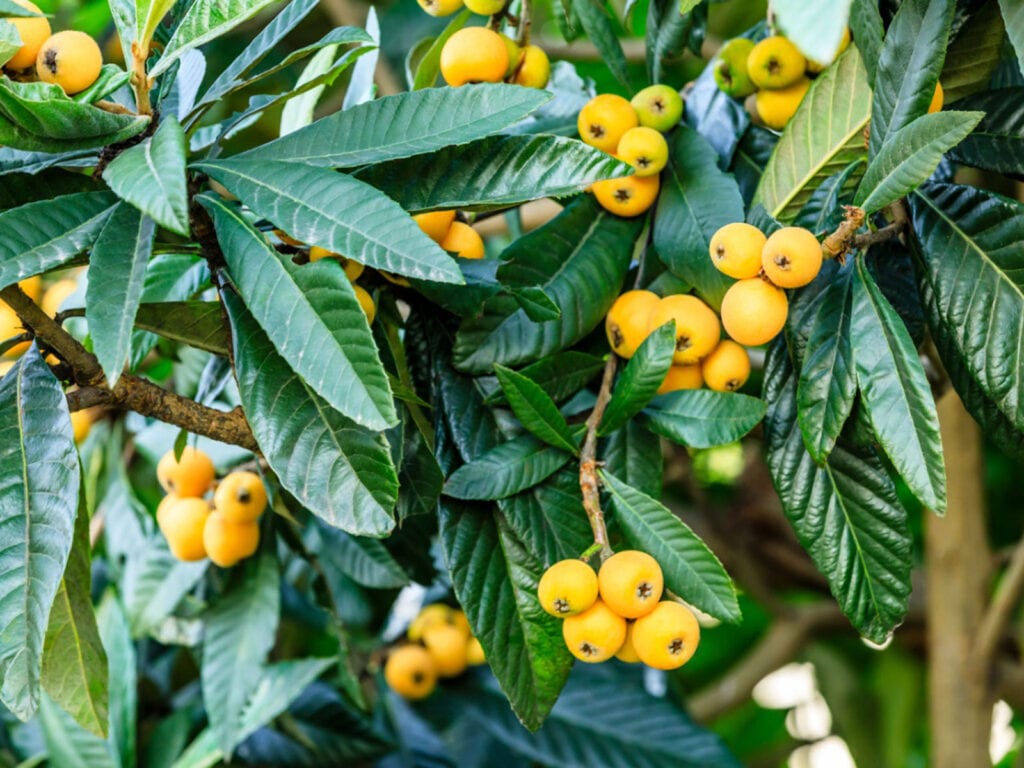
This fruit tree rapidly grows, and it can reach 25 to 30 feet in height in shaded areas. In a sunny location, it can reach up to 15 to 25 feet. The leaves can reach up to ten to 12 inches long. Younger leaves are downy, and older leaves are leathery. Loquat fruits have three kinds of shapes: oval, pear-like, or rounded. Its fruit grows in clusters, and it is three to five centimeters long. The skin can be smooth or downy, orange, yellow, or red color.
When taking care of this tree, focus on giving it good nutrition, manage the weed that surrounds it, and manage the water consumption well. Its flowers bloom in fall and produce ripe fruit from the end of winter to early spring. The loquat tree is known for its tasty, sweet, and tangy offerings; they are small.
If you are on a diet, loquats are an excellent source of vitamins and minerals since they are nutritious low-calorie fruit. It has bundles of potassium and magnesium, which is a must for muscle and nerve functions. Loquats boast vitamin B6 and folate, which is vital for blood cell formation and energy production. Learn More about loquats from verified sources such as Gardener’s Path.
2. Apple (Malus domestica)
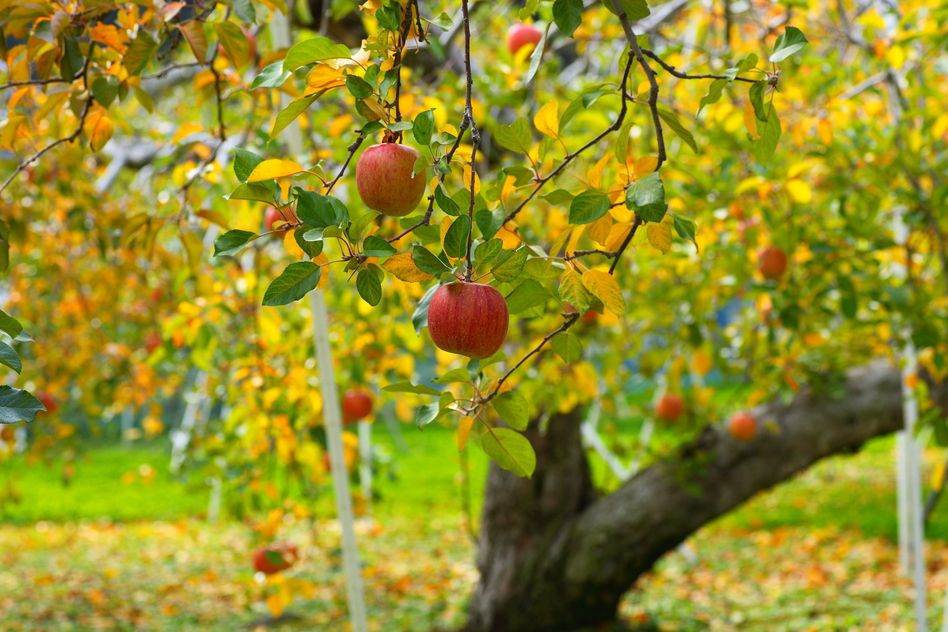
There is a wide array of different apple tree varieties, but the essential characteristics of all apple trees are the same. All apple trees appear toothed, alternate, oval leaves that are 1 to 2.5 inches long and ¾ to two inches wide. Generally, the trees look small, between 10 to 39 feet, though this can grow taller. The quintessential orchard fruit, as we all know, can look red, green, a mix of yellow and red, or yellow itself.
Any fruit trees, including apple trees, must be pruned each year at the end of winter or early in spring. When the coldest temperature has passed, you can prune minimally with younger trees.
Apple is among the most popular fruits and with good reason. The fruit is high in water and fiber, which makes them filling, healthy, and nutritious. Some studies significantly linked apples that help lower the risk of type 2 diabetes. It is probably because of its content, polyphenol antioxidant; it helps prevent further tissue damage.
3. Plum (Prunus domestica)
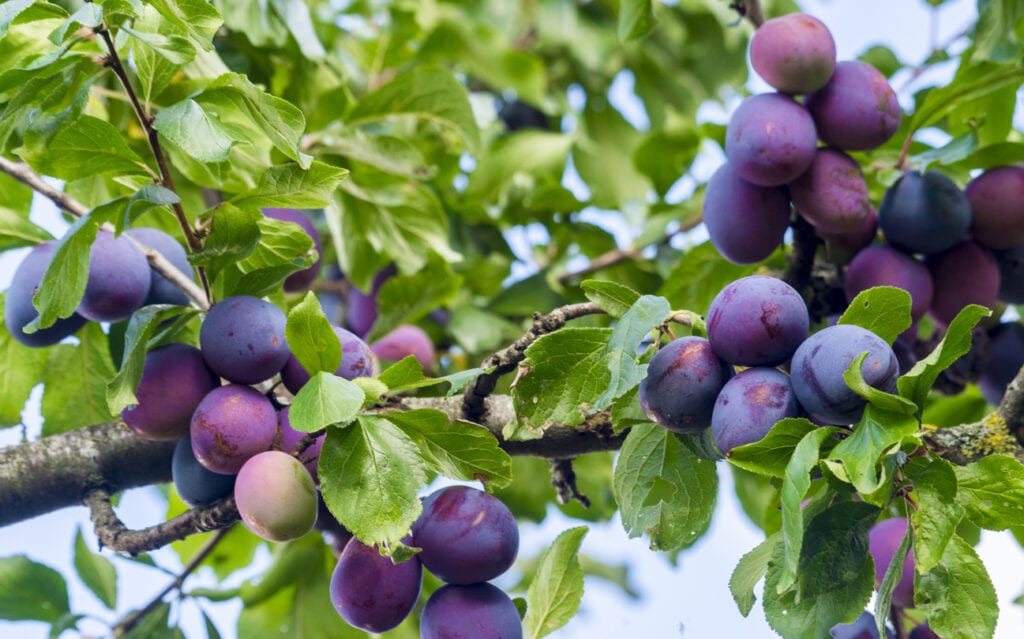
The tree is a small-sized broadleaf; it can be a shrub with a dark-brown bark. The branches can grow straight. It produces a plum that has a smooth surface with purple to thin red skin. The flesh ranges from red to yellow. The fruit can be eaten by cooking it, persevering, pickling, or raw. The leaves are oblong with a pointed tip; the colors differ between green or purple in spring and orange, red, yellow, or purple during fall.
A plum is a drupe – it is when the fruit surrounds a stone, hence, stone fruit. Plum has vitamin C, which helps your body form blood vessels, heal your body, build muscle, and it’s helpful for your eyes too. It can relieve you if you’re constipated, reduce blood sugar, and a good source of nutrition. Along with Vitamin C, it has Vitamin A and K, folate, calcium, and potassium.
4. Mulberry (Morus)
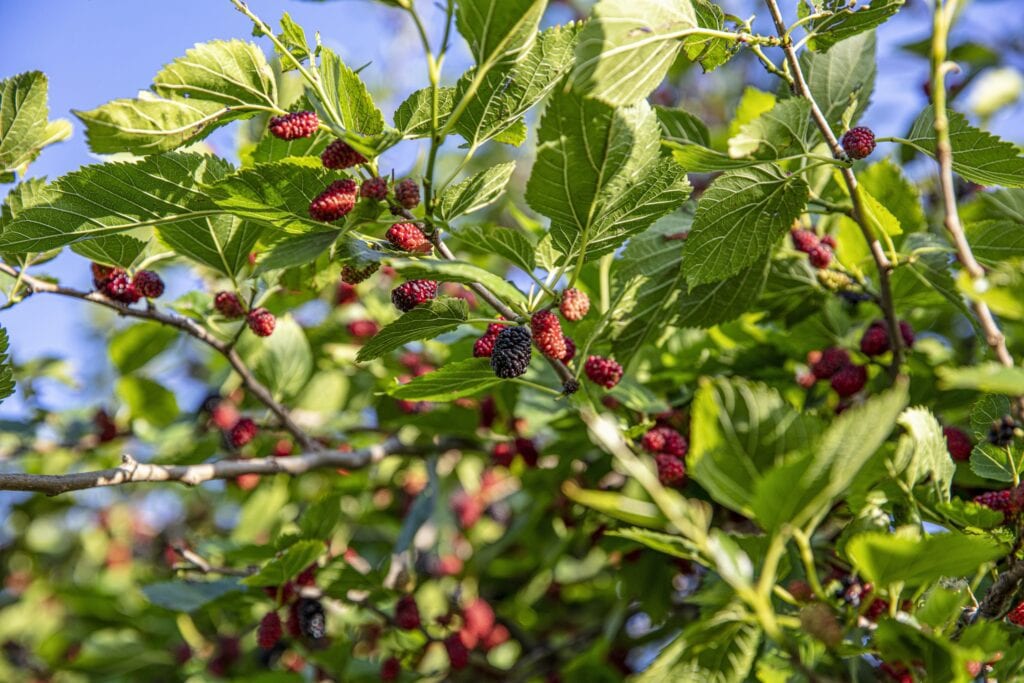
Mulberry trees are most likely to annual shed their leaves. The tree stands upright, and the leaves can look messy if not taken care of. The leaves’ shape has sharp edges, somewhat zigzag-like. This tree bears a fruit called mulberry; when it ripens, it drops from the tree.
This tree is easy to grow in your garden. Remember to fertilize the plant in spring with mulch and compost to ensure that the soil is moist. Beware of immature fruits which have a color of white, pale yellow, or green. You’ll know when the fruit has ripened when it turns from pink to red and then from dark purple to black. Black ripe mulberries have a sweet, addictive flavor.
5. Pear (Pyrus)

Your pear trees can grow up to 40 feet tall and 30 feet wide. The leaves are oval-shaped that are slightly serrated in the edges and a round base. Its fruits are elongated and bell-shaped; it has a broader bottom and a narrow stem. Pear fruits have a sweet taste and a much softer texture as compared to an apple.
The wood from a pear tree is used in furniture and kitchen utensils. Pear trees are one of the first fruits that bloom each year in late February to the middle of April. Pears are known to help you lose weight, improve the healthiness of your heart, and can promote gut health. Interestingly, the most expensive pear in the world is a pear in the shape of a Buddha. The pear looks precisely like a statue of a Buddha.
6. Cherry (Prunus avium)
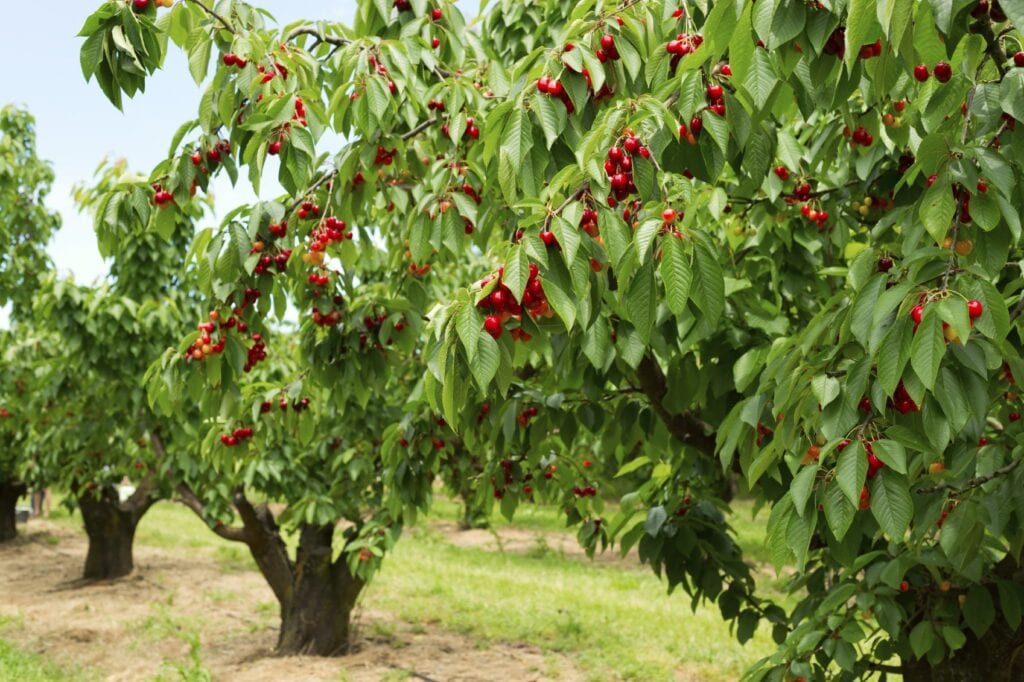
The leaves of cherry trees have serrated edges that look like a saw blade but tinier and green. The serrations are small, so look closely when touching it. The tips are pointed, and it’s generally between 2.5 to five inches in length. The fruit’s flesh can be yellow or red, but the outer layer can be dark red to black or light yellow-red.
Today’s cherries are self-fertile, so you will only need one tree to make sure that you have a good crop. Note that you have to net your fruit for defense until the fruit ripens. When the tree is established, you can expect a beautiful blossom and fruit to last for days. Cherries are great for snacking but beware of the seed and stem when munching on them. Don’t worry about the calories as it’s packed with nutrients.
Takeaway
Growing fruit trees in your garden can never go wrong. You have the beautiful blossoms of the plant, and you can eat the fruits. Just be patient when waiting for it to grow. It will be worth it when you wait for things, just like the six fruit trees mentioned above.




